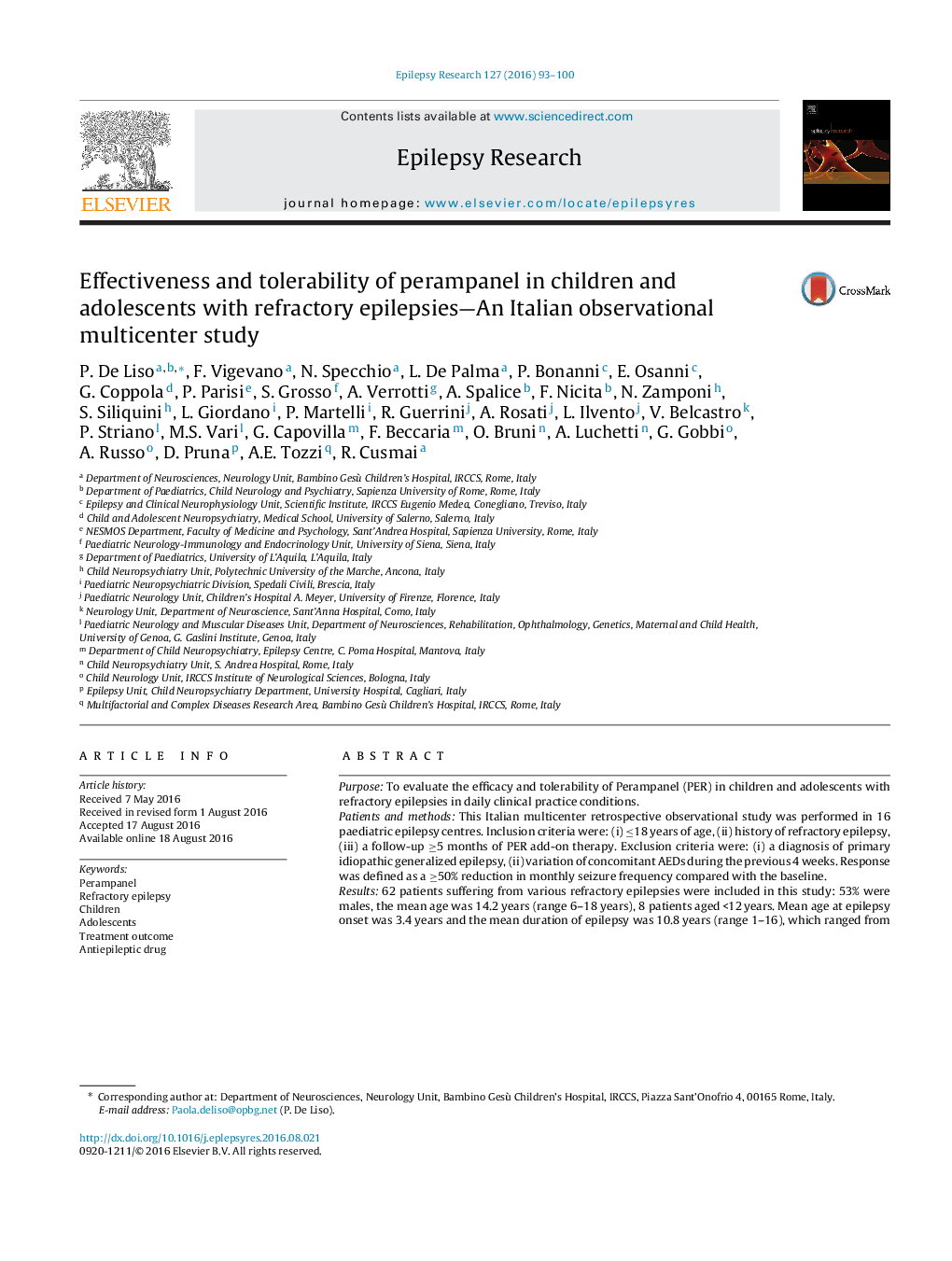| کد مقاله | کد نشریه | سال انتشار | مقاله انگلیسی | نسخه تمام متن |
|---|---|---|---|---|
| 6015014 | 1579896 | 2016 | 8 صفحه PDF | دانلود رایگان |

- In this retrospective observational study carried out in Italy, 62 patients with refractory epilepsy of various origins (8 patients agedâ<12âyears) started treatment with perampanel as add-on therapy with exclusion of primary idiopathic generalized epilepsy.
- At a median follow-up of 6.6 months, treatment with perampanel was associated with an overall response rate (reduction in seizures frequencyââ¥50% vs. baseline) in half of patients with 5% of patients becoming seizure free. The overall number of seizures significantly decreased from baseline to follow-up.
- Adverse events (mainly consisting of behavioral disturbances, dizziness and sedation) occurred in 19 patients (30.6%).
- Four patients (9.7%) stopped medication beacause of lack of efficacy and 10 for adverse events, 6 of them for aggravation of seizures.
- These preliminary data indicate that perampanel was effective in children and adolescents with refractory epilepsies, and exhibited an acceptable safety profile.
PurposeTo evaluate the efficacy and tolerability of Perampanel (PER) in children and adolescents with refractory epilepsies in daily clinical practice conditions.Patients and methodsThis Italian multicenter retrospective observational study was performed in 16 paediatric epilepsy centres. Inclusion criteria were: (i) â¤18 years of age, (ii) history of refractory epilepsy, (iii) a follow-up â¥5 months of PER add-on therapy. Exclusion criteria were: (i) a diagnosis of primary idiopathic generalized epilepsy, (ii) variation of concomitant AEDs during the previous 4 weeks. Response was defined as a â¥50% reduction in monthly seizure frequency compared with the baseline.Results62 patients suffering from various refractory epilepsies were included in this study: 53% were males, the mean age was 14.2 years (range 6-18 years), 8 patients agedâ<12âyears. Mean age at epilepsy onset was 3.4 years and the mean duration of epilepsy was 10.8 years (range 1-16), which ranged from 2 seizures per-month up to several seizures per-day (mean number = 96.5). Symptomatic focal epilepsy was reported in 62.9% of cases. Mean number of AEDs used in the past was 7.1; mean number of concomitant AEDs was 2.48, with carbamazepine used in 43.5% of patients. Mean PER daily dose was 7.1 mg (2-12 mg). After an average of 6.6 months of follow-up (5-13 months), the retention rate was 77.4% (48/62). The response rate was 50%; 16% of patients achieved â¥75% seizure frequency reduction and 5% became completely seizure free. Seizure aggravation was observed in 9.7% of patients. Adverse events were reported in 19 patients (30.6%) and led to PER discontinuation in 4 patients (6.5%). The most common adverse events were behaviour disturbance (irritability and aggressiveness), dizziness, sedation and fatigue.ConclusionPER was found to be a safe and effective treatment when used as adjunctive therapy in paediatric patients with uncontrolled epilepsy.
Journal: Epilepsy Research - Volume 127, November 2016, Pages 93-100